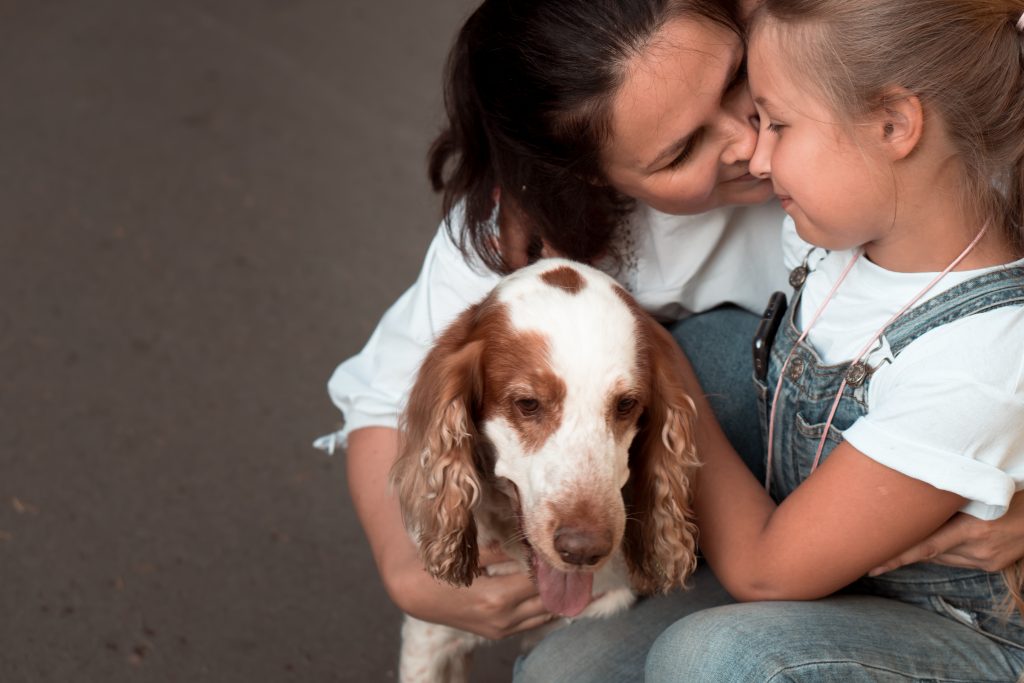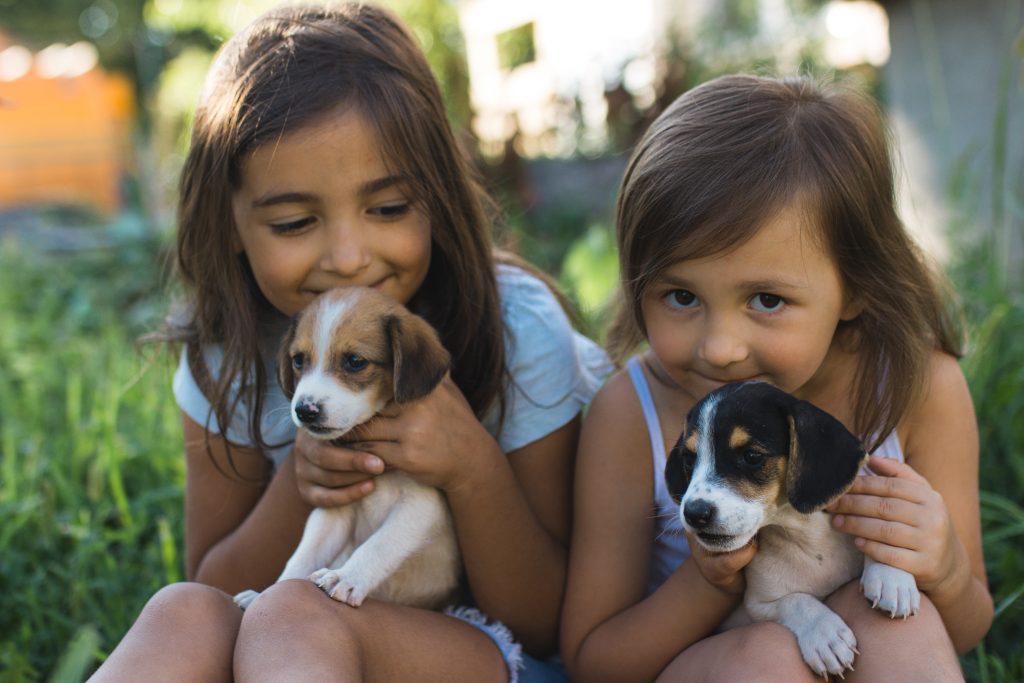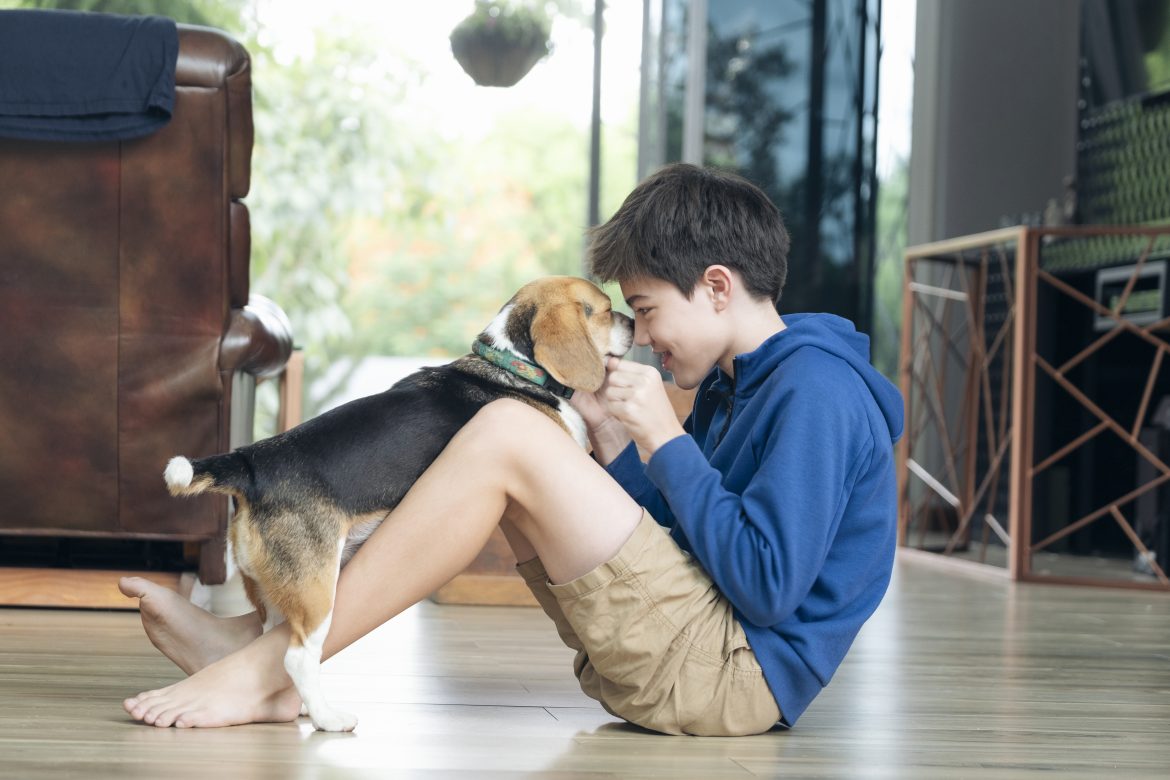Dogs are often referred to as man’s best friend, but they can also be an excellent choice as a family pet, especially for children. In this article, we will explore the top five reasons why dogs make fantastic pets for kids. However, before introducing a furry friend to your family, it is crucial to give careful consideration to ensure that your home and lifestyle will accommodate the needs of a dog. Along with the many benefits of dog ownership, there are also responsibilities, such as providing proper care, feeding, exercise, and training. By teaching children the importance of these responsibilities, pet ownership can be an excellent opportunity for them to develop important life skills, including socialization, empathy, and accountability. Keep reading to discover how dogs can provide children with a sense of security, companionship, and valuable life lessons.

1. Dogs are Great Companions
Dogs make great companions for children because they offer unconditional love and endless amounts of joy and fun. They are loyal, affectionate, and always eager to please their owners. Children can develop a sense of companionship with dogs, which helps them build social skills and empathy towards other animals and humans.
One of the most significant benefits of having a dog as a pet is the positive impact it can have on a child’s mental health. Research suggests that being around dogs can reduce stress levels in both children and adults. Furthermore, the simple act of petting a dog can lower a child’s heart rate, thus decreasing the risk of heart disease.
There are several breeds of dogs that are particularly well-suited for children. Golden retrievers, Labrador retrievers, and beagles are just a few examples of breeds that are known for their friendly and playful nature. When selecting the best pet for children especially for dogs, it is essential to consider the age and activity level of the child. Older children may prefer a more active dog, while younger kids may benefit from a dog that is less energetic and requires less exercise.
2. Dogs are Active and Playful
Dogs are well-known for their playful and energetic nature, which can be a perfect match for children who love to play and have fun. These furry friends are always ready to engage in physical activities, run around the yard and play fetch, among other exercises that can keep your children entertained and active.
When it comes to exercise, having a dog can be an excellent way to encourage a family to maintain an active lifestyle. A dog requires regular walks and physical activities to keep them healthy, and this can also help parents and children develop healthy habits. By taking your dog for a walk or playing frisbee in the park, you are engaging in physical activity, which can help you reduce the risk of heart disease. In fact, research has shown that owning a dog can positively impact your health and wellbeing.
Furthermore, dogs can be a great social stimulant. Taking your dog for a walk can provide an opportunity to meet new people and add some extra social interaction to your day. This can be particularly important for children, especially those who may struggle with social skills. As such, dogs can be viewed as valuable family members that bring more than just physical and mental benefits.
3. Dogs Can Help Teach Children Responsibility and Empathy
Dogs are not only great companions, but they can also play a significant role in teaching children important life skills such as responsibility and empathy. Caring for a dog properly requires a lot of effort, and assigning age-appropriate tasks to kids can help them understand the value of following through with their duties.
Children can undertake a variety of tasks to care for their furry pets, such as feeding them, walking them, cleaning up after them, giving them attention and affection, and taking them to regular veterinary checkups. By fulfilling these responsibilities, children learn discipline, time management, and accountability. They also develop a sense of empathy towards their pets, understanding that their furry friends rely on them for their wellbeing.
Assigning age-appropriate tasks to kids is crucial as it helps them develop a sense of responsibility for their actions. Younger kids can start with simpler tasks, like filling the water bowl or playing with the dog under supervision, while older children can handle more complex tasks. Parents can also gradually increase the level of care and responsibility given to children, giving them a sense of progression and accomplishment.
Teaching children to approach pets with kindness and respect is also essential. Parents can model good behavior by demonstrating how to interact with pets calmly and positively. Children who develop empathy towards their dogs are more likely to exhibit these traits towards other people. Additionally, children who spend time with pets may develop an increased sense of emotional intelligence, which prepares them to navigate complex social situations later in life.
Caring for a furry friend helps children learn valuable lessons about responsibility, empathy, and compassion. These life skills are crucial in helping children become well-balanced adults who can navigate relationships and responsibilities.
4. Dogs Can Also Help Children Develop Social Skills
Dogs are social animals and having one as a companion can help children develop and improve their social skills. Interacting with a dog teaches children important social cues, such as appropriate body language and tone of voice. This can lead to better communication with other humans as children learn to recognize and respond to social cues more effectively.
As children care for their dogs, they learn empathy and compassion, which are essential qualities for healthy social interactions. Through feeding, grooming, and playing with their pets, children develop a sense of responsibility and dependability. They also learn to become attuned to the needs of others, which can translate to stronger relationships and social interactions outside of the home.
Training a dog can also help children develop their social skills. Dogs require consistent training and obedience, which teaches children the importance of clear communication and following through with instructions. This improves their ability to communicate effectively with others and helps them build confidence in their own abilities.
It is important for parents to supervise interactions between their children and their dogs. This can help children learn to handle potentially challenging situations, such as dealing with a dog that is scared or aggressive. Proper supervision also ensures the child’s safety while interacting with their pet.

5. Dogs are Known to Provide a Sense of Security for Children
In addition to the emotional and social benefits, dogs also have a protective nature that can provide a sense of security for children. Many children feel safer with a dog around because they perceive them as guardians and protectors. Here are five reasons why dogs are known to provide a sense of security for children:
1. Deter threatening situations: A dog’s presence can often deter potentially threatening situations. Intruders or strangers may be less likely to approach a house with a barking dog. This can help prevent potentially dangerous situations from occurring in the first place.
2. Alert to intruders: Dogs have an excellent sense of hearing and can often detect intruders or unusual sounds before humans. Many dogs will bark or alert their families to alert them to potential danger.
3. Scare off wildlife: Depending on where you live, there may be wildlife that could pose a threat to children. Dogs can help keep these animals at bay and keep your children safe. For example, a barking dog may scare off a bear or coyote.
4. Specific examples: There are many stories of dogs protecting children in specific situations. In one instance, a dog alerted a family to a fire in the middle of the night, which allowed them to safely evacuate the home. In another instance, a dog scared off a would-be kidnapper and kept the child safe.
5. Peace of mind: Having a dog around can provide parents with peace of mind knowing that there is an extra layer of protection in the home. This can help alleviate anxiety and worry, especially when children are home alone or out playing in the yard.

Conclusion
In conclusion, while there are many benefits to having a dog as a family pet, it is important to carefully weigh the decision before bringing one into your home. Parents should consider their family lifestyle, children’s age, responsibility level, and allergies before making a decision. Caring for a pet involves a lot of responsibilities, including feeding, grooming, and exercise, which parents need to be prepared to take on as well.
Realistic expectations for children’s contributions should also be set, and safety concerns must be acknowledged and addressed. Seeking the advice of an expert before choosing a dog breed can provide valuable insights into the temperament and needs of different breeds and ensure that the pet fits well into the family dynamic. By taking these factors into account, families can ensure that owning a dog is a positive and rewarding experience for everyone involved.




